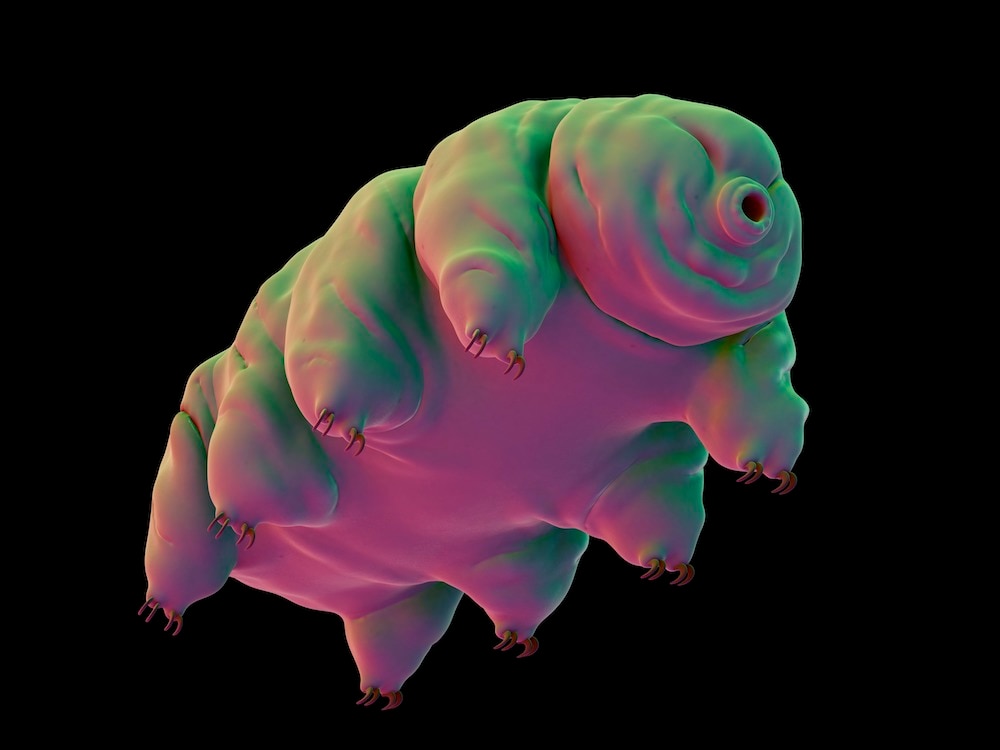Create a free profile to get unlimited access to exclusive videos, sweepstakes, and more!
Could this be why tardigrades can survive just about everything?
Tardigrades have a protein that at least partly gives them the ability to survive what could kill a human.

Tardigrades are legit superheroes. They can survive almost anything, from a deep freeze to blistering heat, and maybe even crashing on the Moon. But how do they do it?
What an international team of researchers have found is that these extremophiles have a disordered protein that might give them at least some of their powers. When the creature is dormant, and this protein is stressed, it morphs into a type of gel with long fibers. The super-substance helps it stay in suspended animation if their surroundings turn into a hellscape. The entire process reverses when a tardigrade wakes up, as if nothing ever happened.
Besides being frozen or dehydrated, tardigrades have shown they are capable of surviving extreme radiation, starvation, and the vacuum of space completely unprotected. (But whether any got out alive when lunar lander Beresheet unexpectedly crash-landed remains to be seen.) Many of the mechanisms that make tardigrades so resistant to things that could easily kill a human remain elusive. Now we think the disordered protein CAHS-8 has a part in this near-immortality.
“The ability to reversibly form fibrous gels may be associated with the enhanced protective properties of these proteins,” the researchers said in a study recently published in Angewandte Chemie.
Cryptobiosis is the inactive state a tardigrade enters when conditions become too adverse for it to keep going. It is somehow able to halt its metabolic procedures so it can stay alive (with almost no expiration date) until whatever horrors it faced become survivable again. There are several types of cryptobiosis a tardigrade can enter, including anhydrobiosis or desiccation. The disordered ends of the spiral CAHS-8 protein in desiccated tardigrades keep up an unusually high level of activity after the protein turns into a fibrous gel when they go into dormancy.
CAHS proteins are heat-soluble proteins that are one kind of TDP (tardigrade-disordered protein). Disordered proteins are a secret weapon for withstanding extremes. As CAHS-8 experiences more and more stress, it forms long fibers known as oligomers, or polymers with a few repeating units. The length of the polymer chain in an oligomer determines its physical properties. The protein forms oligomers that make up long fibers, which become gels made of fibers, and how strong the gels end up depends on temperature. They can get real tough.
“We were able to probe the behavior of soluble proteins that are encapsulated within the gel matrix, and propose possible mechanisms by which the formation of such fibrous gels can enable anhydrobiosis,” said the researchers.
What tardigrades are still hiding is the exact way in which forming fibrous gels protects them, but at least they revealed what CAHS-8 does. The disordered ends of the protein remain flexible despite a lack of water. This might also be associated with making it through extreme cold, since less water means less potential for killer ice crystals. Something that was observed in the tardigrades was that the water needed to maintain the fibers during cryptobiosis was much less than it would be if they were crawling around and doing whatever a tardigrade does.
There are still many secrets tardigrades aren’t giving up just yet, but there must be more things waiting to be discovered in the other TDPs. We can only marvel at how they are apparently closer to immortality than any character Marvel has ever come up with.


























